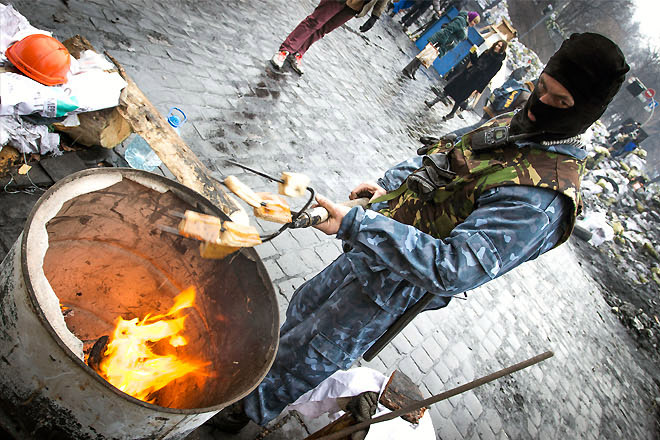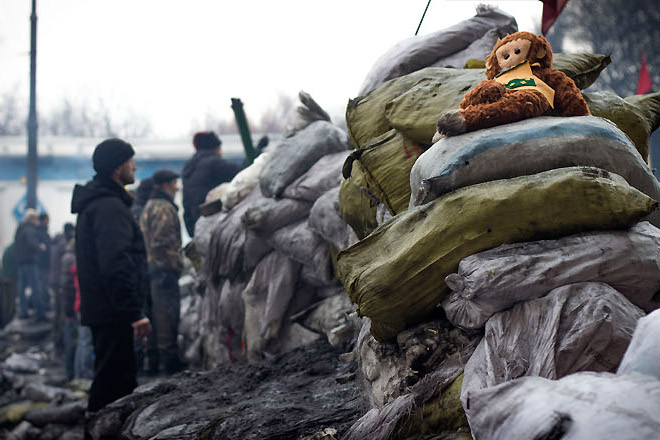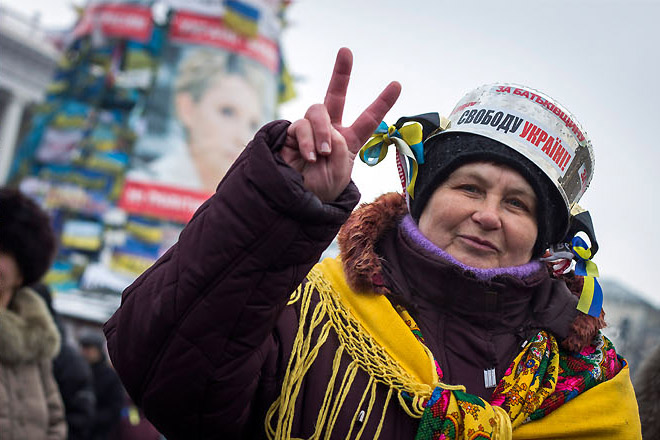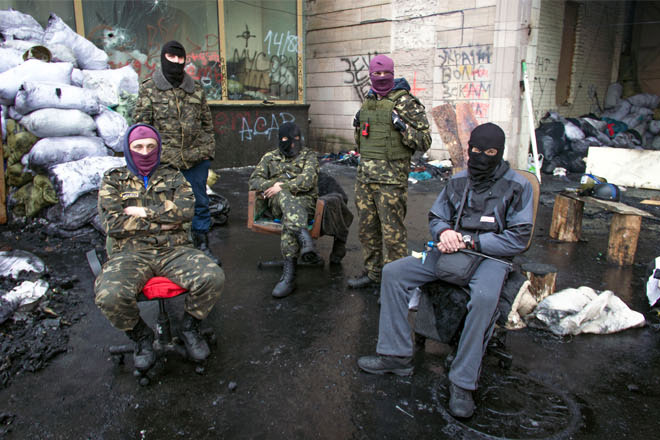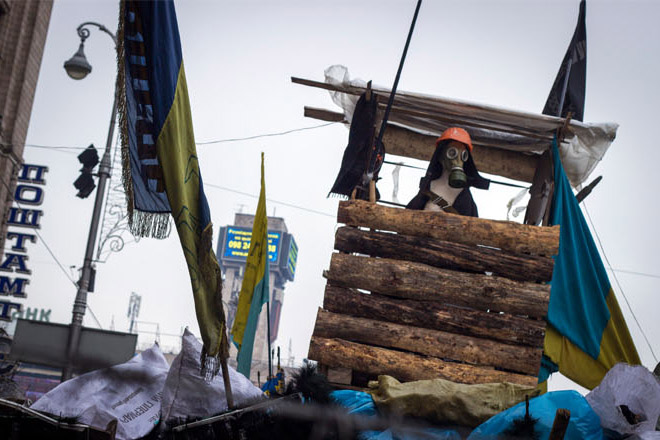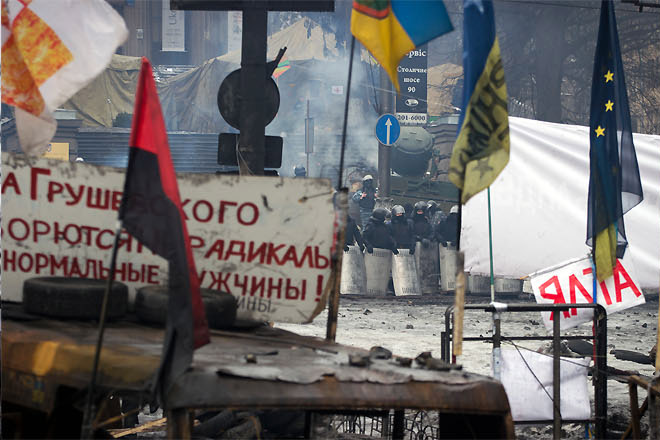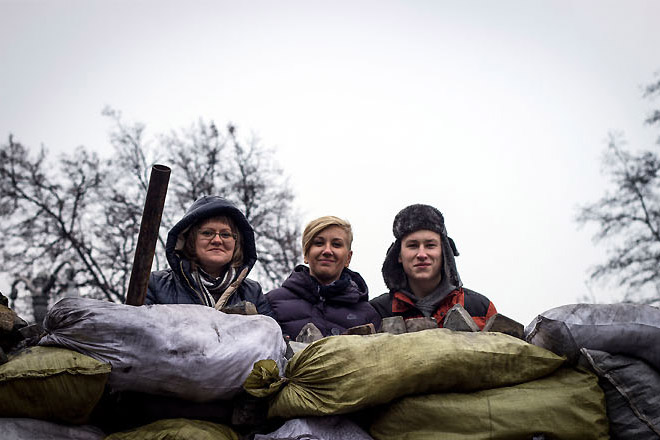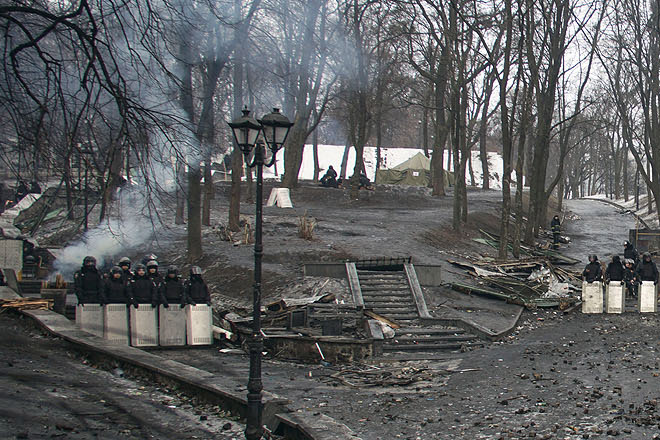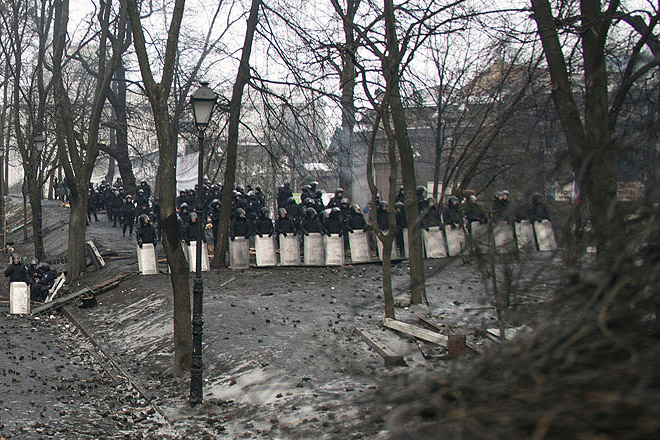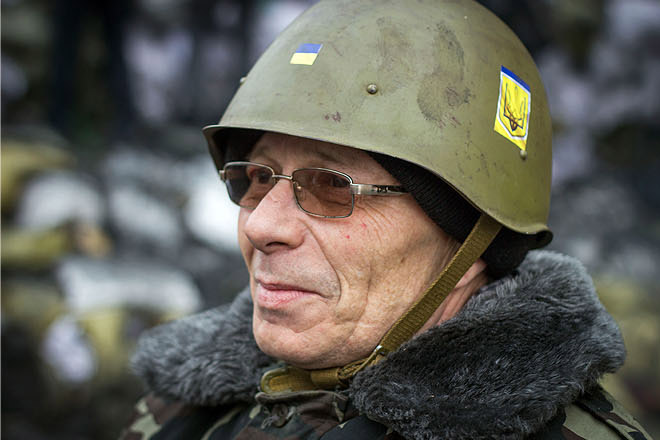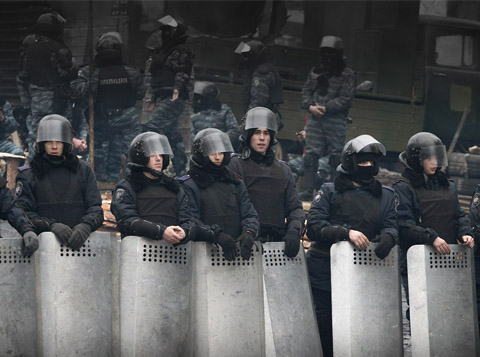
Republication from 2014
This is what preceded the invasion
I’m welcomed by the enormous apartment buildings that characterise the suburbs of the former Soviet city. The buildings serve as micro-districts, each with their own schools and churches, abandoned nightclubs, cafés, and playgrounds. My marshrutka, a small ten-seater van, is being aggressively and haphazardly driven across the highway.
I bump into my girlfriend, who startles awake; the driver has stuffed twenty people into his van. Fortunately, it’s winter, and people aren’t particularly sweaty. But in the summer, this would have been a much more sticky and undoubtedly smelly experience.

Marshrutkas will take you everywhere you want to go in the former Soviet Union, but this one is going not quite straight from the airport to Kyiv. As a student of international relations with an interest in war journalism, I thought it might be a good idea to get some practical experience in Kyiv. My girlfriend, who is of Palestinian and Iranian descent and therefore familiar with protests, wanted to come. We’re curious to find out how the protests in Ukraine are happening.
Ice fishing on the Dnieper
The anti-government protests in the Ukrainian capital made all the headlines, but as we head into the city, everything appears normal. Children walk home from school, and uniformed police officers direct the busy afternoon traffic. On the seat in front of me, a couple is making out. A couple of kids with snowboards walk by laughing, heading to the snow-covered hills up ahead.
On the side of the roads, an old woman who would have been shuttled off to an old folks’ home in the Netherlands sells fur hats for a few hryvnia. But maybe I’m not seeing it right; I don’t think the window I’m looking out of has been cleaned since the taxi van rolled off the factory floor.
Crossing the frozen Dnieper River, I spot dozens of people staring into dark holes: they’re ice fishing. The Motherland Monument, the giant statue rising on the riverbanks, sparkles in the winter sun. While the city is still covered in a thin blanket of snow, the real cold has passed and thaw is slowly setting in. The fishermen are on thin ice which could break at any moment, as can the country, according to some politicians.
Shopping in high heels
‘Ukraine is on the precipice of a civil war’, former president Leonid Kravchuck warned the Ukrainian parliament in late January, after the first deadly victims of the Euromaidan protests.
This movement started late 2013, when Ukrainian president Viktor Yanukovych rejected an association agreement with the European Union (EU). Instead, he turned to Russia, which then offered him 11 billion euros in government loans. This to the fury of hundreds of thousands of Ukrainians. But the incessant protests are about more than just European integration; they’re also about the regime’s widespread corruption and human rights violations.
It’s bizarre to watch rich women in high heels shopping at fancy fashion boutiques at one end of the city’s main street Kreschatyk, while protesters armed with pitchforks and alarm pistols are facing off with police. The Euromaidan area, blocked off by tents, barricades, and watch towers, almost looks like a festival. People are coming from all over to witness the protests. For five hryvnia, you can have your picture taken with Tigger or a Minion.
A stage has been erected on Independence Square, where poets, politicians, and musicians take turns. A little further down is the European Square, with on the left the occupied Ukrainian House and on the right ‘the barricades of Hrushevskoho’, the epicentre of the violence during the riots in late January. Any photos you’ve seen of burning buses and Molotov cocktails were probably taken right here.

I know that news is the exception that proves the rule. Pictures of ‘Kyiv burning’ were seen by people all over the world. The space that’s being occupied may only be a small part of Kyiv’s whole, but it is the city’s main thoroughfare and square. Hrushevskoho road leads to other government buildings.
And now? The protesters and the police have reached a kind of ceasefire, and the atmosphere is almost amiable at times. People on the barricades take pictures while handing out sandwiches with jam or cheese. Many of the long-haul protesters are wearing Russian helmets from the Second World War adorned with the Ukrainian coat of arms in paint, or the name of their city.
EU flags on rickety barricades
An older man, ‘Lviv’ painted on his helmet, sits next to a fire pit. He quit his job as a lawyer to fight for a better country. In the background, a group of youngsters is taunting the police. Each shift of protesters only consists of twenty or thirty people, but they’re still making all the headlines.
They might be outnumbered by the high-heeled shoppers, but newspaper readers are much more interested in pitchforks, walkie-talkies, blackened national monuments and gas masks, EU flags flying from rickety barricades. Speakers on either side of the barricades are blasting loud music, sometimes punk, sometimes something classical. As long as it drowns out their opponents.
The protesters are using a beamer to project the news on a screen on the barricade; the police officers watch it all day. Sometimes, a priest comes by. Both parties will turn off their music to let him speak. But when one protester starts to play the piano, the police turn their music up. It’s a stand-off, and sometimes there are more journalists than protesters.
The best of times, the worst of times
‘I’d compare the revolution to A Tale of Two Cities by Charles Dickens’, says Asia, a twenty-seven-year-old editor at a Ukrainian art magazine. ‘It was the worst of times, it was the best of times. People have died for this revolution, but at the same time, people are fighting for their rights.’
She beams at me and I smile back. I met her five years ago through a friend in Budapest. The last time I saw her was last summer, when she was depressed, tired, and disappointed that her compatriots didn’t care about the corruption and human rights violations. But Euromaidan changed this.
She’ll be our host for the next few days. Asia is a romantic, ending most of her conversations by saying ‘love and peace’. It’s a shame her disposition is inspired by rose-coloured ideas. Fortunately, she’s aware of this. ‘You’d be better off discussing politics with my roommate. She’s much more rational than I am.’

Roommate Hanna is a photographer. One of her jobs is taking pictures for the official Euromaidan Facebook page. She’s easily recognisable by her red hair – ‘It’s dyed’ – colourful dress, and black combat boots. Passing by the occupied city hall building, we strike up a conversation with one of the protesters. He’s dressed in camouflage gear and wears a helmet, as well as a bullet-proof vest. On his arm, he wears a patch I recognised as belonging to the Ukrainian People’s Self-Defence, an far-right organisation.
Before he donned his gear, he was the head of a rural community. When he hears I’m Dutch, he immediately starts talking about our drug policy. ‘You have to draw a moral line and stop this, just like when I stopped the regime from bribing me when I was the head of my village. This should all change in the new, democratic Ukraine, we need to draw that same moral line. Drugs, prostitution, corruption: they’re all wrong.’
Hanna responds sharply: ‘You’re smoking in a public space. I don’t like your cigarette smoke and democracy is all about compromise. You can’t accuse other people of lacking a uniform moral code if you don’t have one yourself.’
The man scoffs, puts out his cigarette, and shakes our hands. As we continue down the majestic thoroughfare, Hanna tells me about her colleagues at the media company she works for. They had a visit from the Ukrainian police today. She thinks she was spared being interrogated because she’s still registered at her previous address. ‘I never thought this would happen to me in my country.’
She’s also worried about how divided the opposition is. Previously, two different groups came to blows in the Ukrainian House. ‘I’m so worried about what will happen to this country post-Yanukovych.’
Candy from nationalists
In addition to the yellow and blue of the Ukrainian, European, and Svoboda (an anti-communist and nationalist party) flags, I’m also seeing a lot of red and black around. These are the colours of the Ukrainian Insurgent Army (UPA), which fought against Soviet oppression in the 1930s. Ukrainian friends warned my girlfriend of this group’s supporters. ‘They won’t like you because of your light-brown skin.’

But nothing could be further from the truth. Men, made unrecognisable by their red and black ski masks, give her fudge and other candies. ‘Is she married yet?’ one of them asks, as I’m being presented with a pitchfork covered in pig grease.
Asia isn’t too worried about the nationalist protesters. ‘It’s not like they’re running around attacking people who speak Russian. They just want to be allowed to call themselves Ukrainian and speak Ukrainian.’
Both she and Hanna were born in eastern Ukraine, where people mainly speak Russian. ‘The east isn’t a big fan of Yanukovych right now’, says Asia, ‘but they dislike western Ukrainians even less, since they started a guerilla battle against the Soviet regime.’
The thaw continues
The days in Ukraine go by too fast. On the last day, the cheap vodka from the convenience store around the corner is seeking revenge. I can’t deal with a marshrutka today. Our taxi driver, a man in his fifties, tells us how he feels about Euromaidan in broken German. ‘Net khorosho’, he says. No good. The hryvnia has plummeted and food and other necessities have become expensive. Many important roads have been closed off. ‘Euromaidan Problem’, he says, again. ‘Aber Yanukovych auch Problem.’ But Yanukovych is a problem, too.
Five days after we arrived, we cross the Dnieper again, this time going the other way. There are still people on the ice staring into dark holes, but fewer than before; the rising temperatures are making the ice dangerous. I suddenly realise that the barricades, which are made of bags of ice, will soon melt into a sad mess of plastic.
But the protests have breathed new life into an old saying, Asia told me shortly before we left: ‘It will take a Ukrainian man two days to put up a shelf in his home, but he’ll build a barricade in thirty minutes.’
Christiaan also visited the Student Assembly in the occupied Ukrainian House, where he spoke to recent graduate Nina.
